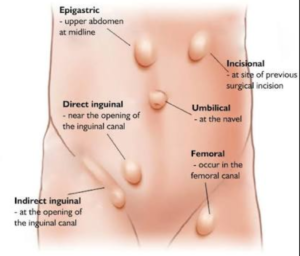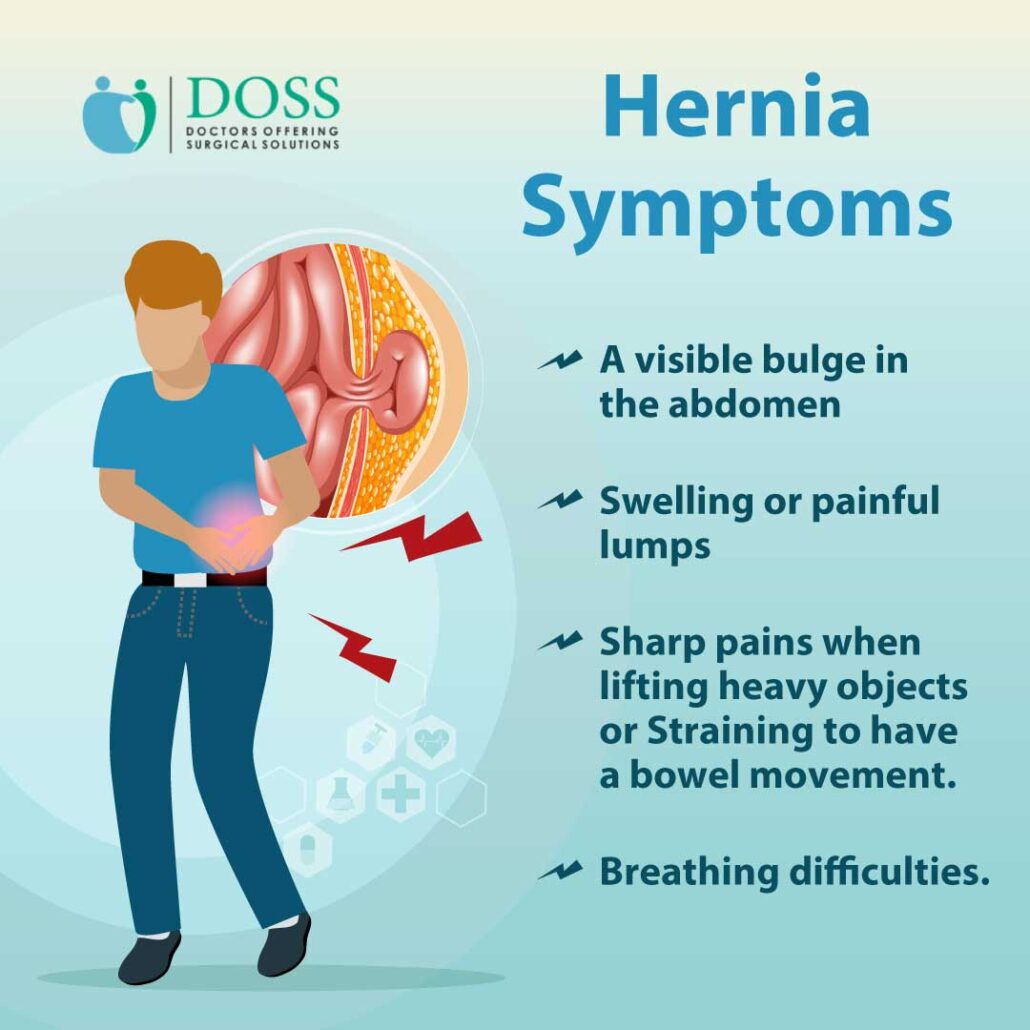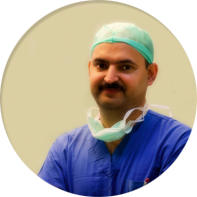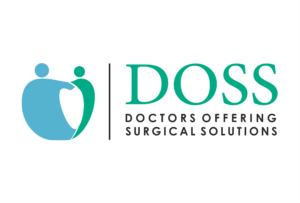
Hernia surgery is a procedure that repairs damaged or weakened abdominal muscles, which can cause a protrusion of the abdomen wall.
Hernia surgery aims to return the abdominal organs and tissue into the abdominal cavity, thus relieving pressure and reducing discomfort.
Several hernia surgeries are available, including open, laparoscopic, and robotic-assisted hernia repair. Each type offers unique advantages and disadvantages depending on the patient’s condition.
Hernia Symptoms
Hernias are caused by weakened or damaged abdominal muscles and can cause discomfort, pain, nausea, and difficulty moving in the affected area. Symptoms can vary depending on the type of hernia and its location in the body.
Common symptoms include –
- A visible bulge in the abdomen
- Swelling or painful lumps
- Sharp pains when lifting heavy objects or
- Straining to have a bowel movement.
- In extreme cases, it can lead to breathing difficulties or other more serious issues.
A hernia can affect one’s daily life in many ways, from physical discomfort caused by the condition to limitations on strenuous activities such as sports or exercise.
Hernias may also require lifestyle changes such as diet modifications to reduce the effects of symptoms.

Diagnosis
A hernia is typically diagnosed through a medical history and physical exam.
Patients may be asked to do simple tasks such as cough, standing, or taking a deep breath to help the doctor assess the condition.
Imaging tests such as an ultrasound or CT scan may also be ordered to better understand the hernia and its location.
It is important to receive an accurate diagnosis before planning for surgery as not all hernias require surgery, and some conditions may require different treatments than surgery.
Through a proper diagnosis, doctors can create an individualized treatment plan that will provide the most effective relief for each patient’s unique situation.
Treatment Options
Treatment for hernias depends on the size of the hernia, its location within the body, and other factors, including the patient’s age and overall health.
Smaller hernias may be monitored over time with lifestyle changes such as avoiding strenuous activities or certain foods that trigger stomach pain.
Medications may also be prescribed to reduce swelling and discomfort.
Surgery may also be necessary for larger hernias to repair weakened muscles.
This procedure is generally done laparoscopically with a few small incisions instead of one large incision. It can help speed up recovery time and make it easier for patients to quickly return to normal daily activities.
Don’t let a hernia hold you back. Trust our expert surgeons for effective hernia treatment in Pune. Regain your strength and confidence today!
Watch this video on the Best Treatment of Hernia by Dr. Neeraj Rayate
Surgical Treatments
Laparoscopic surgery
It is one of the most common and least invasive surgical options for hernia repair. A laparoscope, a thin tube with a small camera attached, is inserted through a tiny incision in the abdomen.
This allows the surgeon to see inside the body and make precise repairs without making large incisions or manipulating organs directly. The benefit of this type of surgery is that it has fewer risks due to its minimally invasive nature.
Robotic surgery
It is an advanced form of laparoscopic surgery that utilizes robotic tools and 3D video imaging to enable surgeons to perform complex operations from a greater distance away from the patient.
This type of surgery offers advantages such as more accuracy, quicker recovery times, and less post-operative pain than traditional open abdominal surgery.
However, some risks associated with robotic surgery include higher costs, increased risk of infection, and longer operative times due to complicated commands being sent back and forth between the surgeon and the robot.
Open surgery with and without mesh
Open surgery is one of the methods used to repair hernias. This procedure is typically done under general anesthesia and involves making an incision near the hernia.
The surgeon then pushes the protruding tissue or organ back into place and reinforces the weakened area of the abdominal wall with sutures or a mesh. The mesh can be either synthetic or made from animal tissue.
When mesh is used in hernia repair surgery, it can provide additional strength and support to the weakened abdominal wall area, reducing the risk of recurrence.
However, there is a risk of complications associated with mesh use, such as infection, adhesion, and bowel obstruction.
In cases where mesh is not used in hernia repair surgery, the weakened abdominal wall area is repaired with sutures alone.
This method can still effectively repair the hernia in some cases, particularly for smaller or less complex hernias, but the risk of recurrence is higher compared to mesh-reinforced repairs.
The choice between open surgery with and without mesh in hernia repair depends on the individual’s health status and hernia characteristics.
It is important to consult with a qualified healthcare provider to determine which method is the most appropriate for an individual’s needs and to discuss the risks and benefits of each procedure.
Types of meshes used in Hernia Repair
Various types of meshes are used in hernia repair surgery, including synthetic and biological meshes.
Synthetic meshes are made from artificial materials, while biological meshes are made from animal or human tissue.
1. Synthetic meshes: These are the most common type of mesh used in hernia repair surgeries. They are made from non-absorbable materials like polypropylene, polyester, and ePTFE.
Synthetic meshes are typically more durable and longer lasting than biological meshes. They provide better strength and support to the weakened area of the abdominal wall.
However, there is a risk of complications associated with synthetic meshes, such as infection, adhesion, and rejection.
2. Biologic meshes: These meshes are made from animal or human tissue that has been treated to remove cells and antigens that may cause rejection in the body.
Biologic meshes are more biocompatible than synthetic meshes and may have a lower risk of complications. They are typically used in cases where there is a higher risk of infection, such as in contaminated or dirty surgical sites.
However, biological meshes are more expensive and may not provide the same level of strength and support as synthetic meshes.
3. Composite meshes: These meshes are a combination of synthetic and biological materials. They offer the benefits of both synthetic and biological meshes and are designed to reduce the risk of complications associated with each type of mesh.
4. Absorbable meshes: These meshes are designed to degrade over time and are eventually absorbed by the body.
They are typically made from materials like polyglycolic acid, polylactic acid, or polydioxanone.
Absorbable meshes are used in cases where the repair is expected to heal within a few months, such as in infants or in cases of small hernias.
5. 3 D mesh : 3 Dimensional Hernia mesh is basically a surgical implant that takes the shape of the body. A 3-D mesh can be placed with open as well as laparoscopic surgery techniques.
The advantages outweigh the conventional meshes approach in this specific case.
The choice of mesh used in hernia repair surgery depends on the individual’s anatomy, health status, and the characteristics of the hernia itself.
It is important to consult with a qualified healthcare provider to determine which type of mesh is the most appropriate for an individual’s needs and to discuss the risks and benefits of each mesh.
Get back to your active life
Book a consultation for hernia treatment in Pune. Doss India is one of the best clinics for treating hernia surgery in Pune.
Visit UsPre-op Preparation
Before hernia surgery, preparing physically and mentally for the procedure is important. Patients should be aware of fasting guidelines and medications that must be taken or avoided before the operation.
Depending on the type of surgery, patients may need to stop taking certain drugs or even undergo a blood test before being admitted to the hospital or clinic. It is also important to plan if any dietary restrictions need to be respected during recovery.
On the day of surgery, patients should wear comfortable clothing that is easy to remove, bring any necessary documents, such as insurance information or medical history forms, and arrive at least 30 minutes before the procedure.
Anesthesia may be required depending on the type of hernia repair being performed, so be sure to follow any instructions given by your doctor regarding preoperative prescriptions and dosing information.
Lastly, asking questions about what will happen during and after the operation is important to feel prepared when you arrive at your appointment.
During Surgery
During hernia surgery, a small incision is made in the abdomen, and the intestines or other organs are moved aside to access the hernia.
The surgeon removes weak or damaged tissue, repairs it with sutures, and closes the hernia site. Depending on the type of hernia repair, the additional mesh may be used as reinforcement if needed.
The length of time for hernia surgery can vary depending on the complexity of the operation and whether or not it is open or laparoscopic surgery.
Generally speaking, simple open surgeries can take up to an hour, while more complex laparoscopy repairs may take two to three hours.
Anesthesia is usually administered during hernia surgery to reduce pain and discomfort.
Local anesthesia is typically used when simple open surgeries are performed, whereas general anesthesia is recommended for more extensive operations that require laparoscopy.
Post-op Recovery
During the recovery period following hernia surgery, there will be some pain and discomfort, which can vary depending on the type of procedure performed.
Managing pain levels to return to normal activities as soon as possible is important. Pain medications your doctor prescribes are usually taken for a few days post-surgery.
It is also essential to care for any incisions or wounds properly to ensure proper healing. This may involve applying antibiotic ointments, regularly changing bandages, and avoiding exposing incisions to water until they have fully healed.
Most people with hernia surgery are encouraged to rest and avoid strenuous activity, such as lifting heavy objects or exercising vigorously for at least 4–6 weeks while they heal.
After this period, physical activity can be gradually resumed based on your doctor’s advice.
It is important to follow up with your doctor after hernia repair surgery to monitor recovery progress and see if any additional steps are needed for further treatment or rehabilitation.
Generally speaking, patients should plan follow-up visits with their doctor one week, two weeks, and six weeks after the operation.
Benefits of Hernia Surgery
Hernia repair surgery provides many benefits, including alleviating pain and discomfort associated with a hernia, improved physical activity, and general quality of life.
Once the hernia is repaired, individuals should find relief from the symptoms they experience daily.
Additionally, it is important to be aware that a hernia can lead to more severe complications if left untreated.
Following surgery, the chances of these potential problems are significantly decreased as the weakened area or tissue is strengthened or reinforced with stitches or mesh.
Finally, patients who have had successful hernia surgery often benefit from improved confidence, increased independence, and a return to everyday activities such as work and recreational pursuits.
The operation cost of hernia surgery in Pune can vary widely, ranging from ₹45,000 to ₹90,000. This fluctuation depends on several factors.
Risks & Complications
While hernia repair surgery is generally a safe and successful procedure, as with any operation, there are potential risks and complications to be aware of.
These can include infection at the wound site, bleeding during or after the surgery, reactions to the anesthetic used, and injury to surrounding organs or tissues.
To minimize the risk of complications, patients must follow their doctor’s instructions before and after surgery.
This may include eating a healthy diet, quitting smoking if applicable, following an exercise plan recommended by your surgeon, and taking any medications prescribed according to their instructions. Patients should also avoid straining during strenuous activity after surgery to prevent hernia further damage.
Our Qualified Doctors

Dr. Satish Pattanshetti - Hernia Doctor in Pune
(Laparoscopic Bariatric & Metabolic Surgeon)
- M.B.B.S (Seth G.S. Medical College & K.E.M. Hospital, Mumbai)
- M.S (B.J. Medical College, Pune)
- Fellow in Minimal Access Surgery from A M A S I
- Fellow in Advanced Laparoscopic Surgery (FALS) from IAGES
- Fellow in Bariatric and Metabolic Surgery from E-Da Hospital, Taiwan
- Dr Pattanshetti is the Founder of DOSS and a leading Diabetes, Bariatric and GI Minimally invasive surgeon.
- He is also an expert in single incision laparoscopic obesity surgery.

Dr. Neeraj V Rayate - Hernia Doctor in Pune
(Laparoscopic & Robotic Surgeon)
- M.B.B.S. (Dr. V. M. Medical College, Solapur)
- M.S. (Government Medical College & Civil Hospital, Sangli)
- DNB Surgery (Diplomate of National Board)
- Fellowship in Gynae Endoscopy (Giessen School of Endoscopic Surgery, Germany)
- Trained and Certified Robotic Surgeon
- Dr Rayate is Co-Founder of DOSS and Head of Laparoscopic, Robotic and Bariatric Surgery Unit at Ruby Hall Clinic, Pune.
FAQs
Why DOSS India
We are a team of expert Harnia Surgeons in Pune dedicated to providing our patients with the highest level of care. Our mission is to provide compassionate, patient-centered care tailored to meet each patient’s needs.
Our staff of highly trained physicians, nurses, and support teams are committed to delivering the best possible outcomes for every patient we treat.
We take pride in putting our patient’s safety and well-being first, so we utilize advanced technology and techniques to ensure their successful and efficient treatment.
With years of experience in the medical field, we strive to ensure that each of our patients receives excellent care with every visit.


 +919011100010
+919011100010 